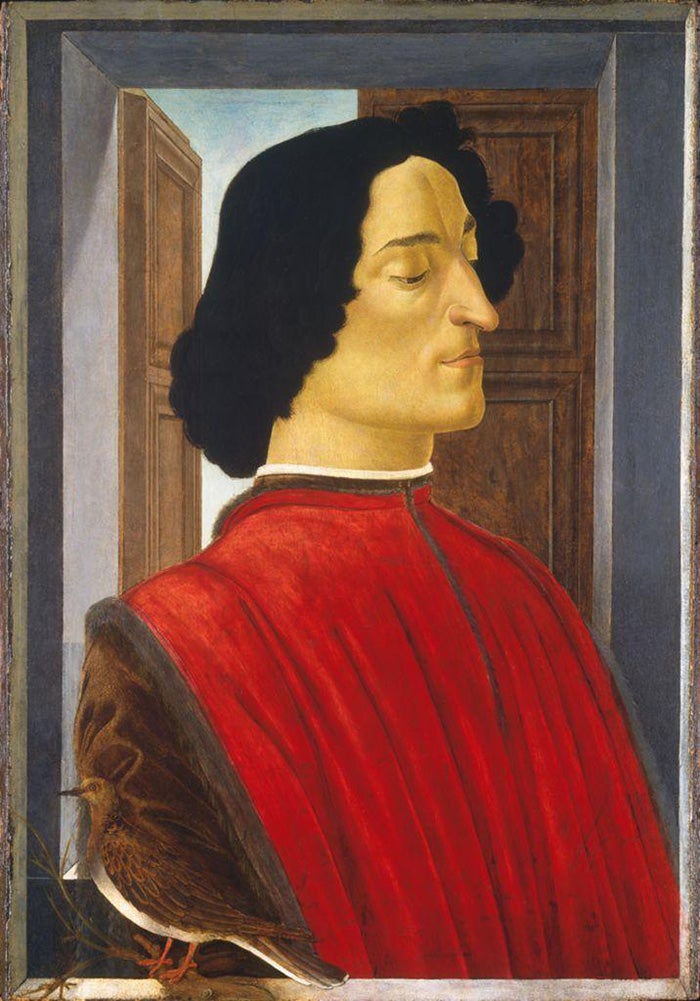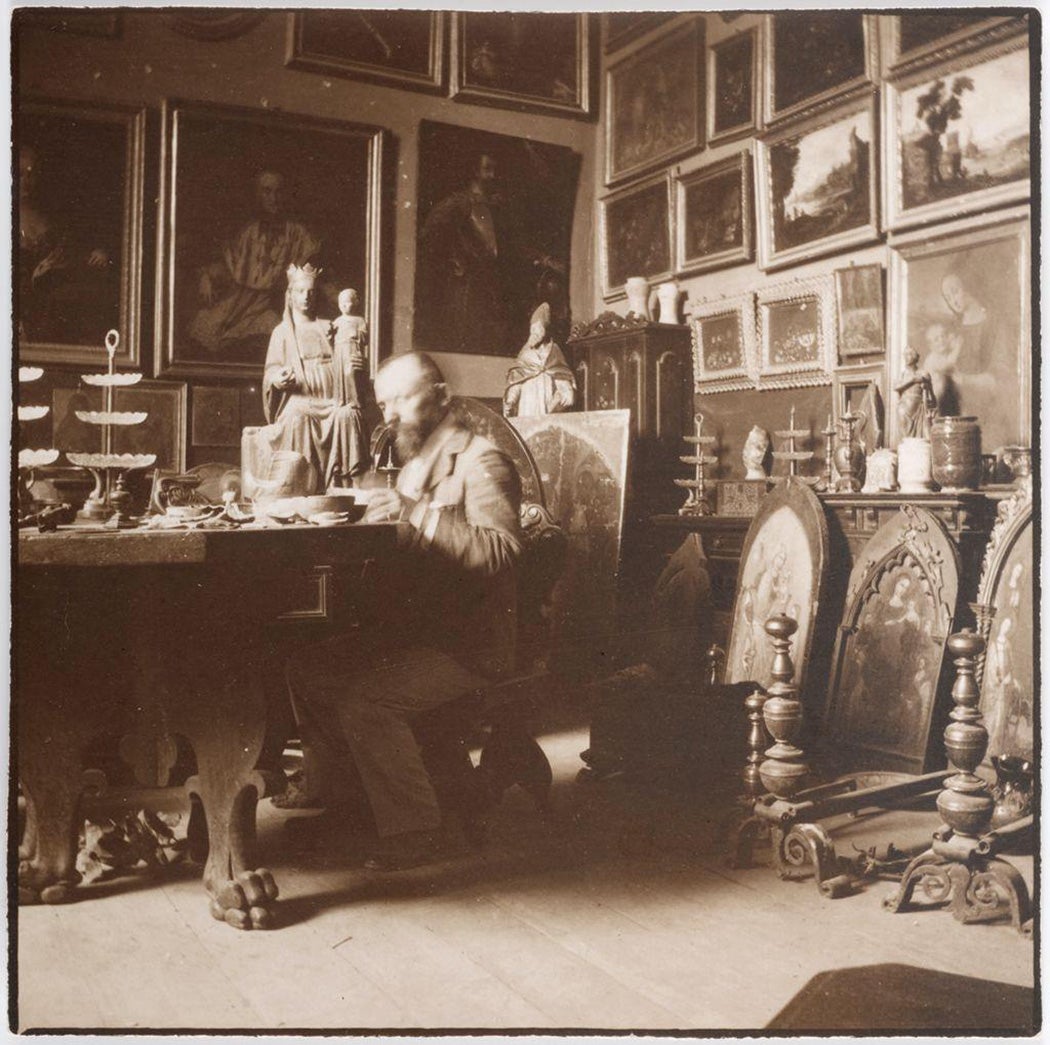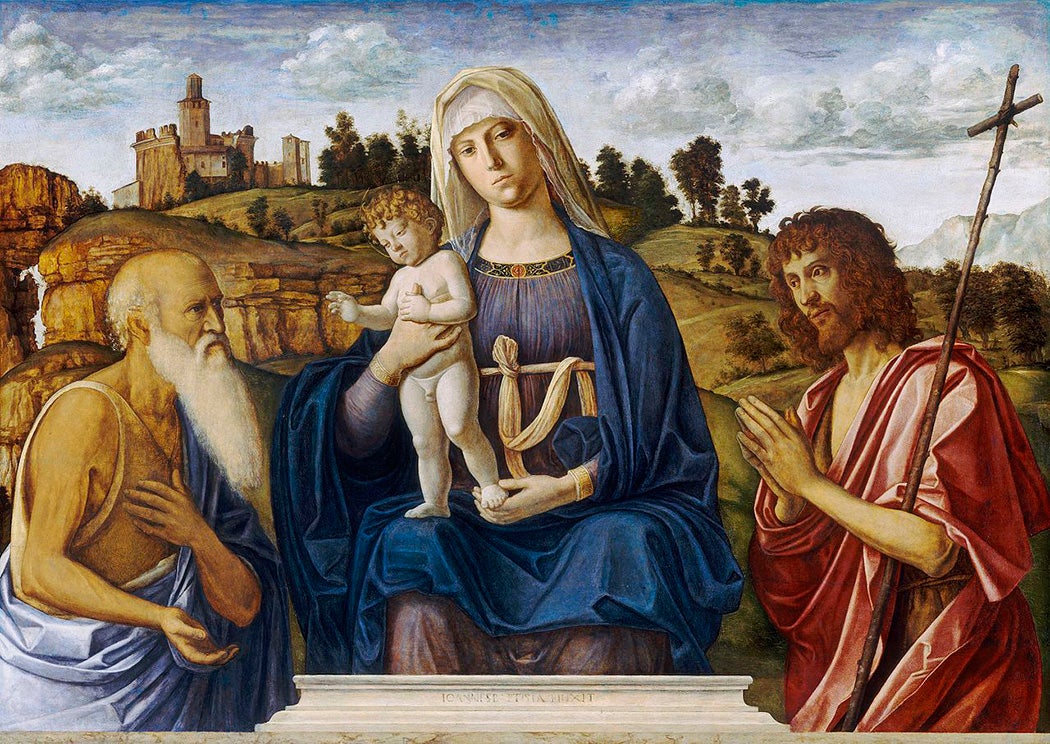The icon indicates free access to the linked research on JSTOR.
Madame X, The Consummation of Empire, and The Andes of Ecuador are all considered examples of great American art, but there was little appreciation for these works (or the artists who made them) at the time of their creation. Indeed, the influential art historian and respected connoisseur Bernard Berenson believed that the United States “did not have enough art to make a serious study of aesthetics,” according to scholar Mary Ann Calo in “Bernard Berenson and America.”
Berenson’s opinion represented that of many American elites. Rather than collecting domestic works, people of means wanted art with a richer historical past. They were seduced by the appeal of Europe’s long history of artistic production and its canonical creators.
Epitomizing Thorstein Veblen’s notion of the leisure class, these collectors sought to communicate and cement their social status, in part, through art acquisition. From roughly 1890 through the end of World War II, they collected with gusto, acquiring medieval and Renaissance works in Europe and bringing them to their homes states-side.
But what accounts for the volume of treasures that ended up in museums across the United States? The fascinating story involves scheming art dealers, shifting economic fortunes and religious realities in Europe, as well as the desire to create a tangible personal legacy.
The Connoisseurs behind the Merchant Princes
Although art historical writing had flourished since Giorgio Vasari’s Lives of the Artists, art consumers of the nineteenth century were particularly reliant on the expertise of the artists and art enthusiasts who published and became authorities on specific subjects. They needed guidance on what was best to buy.
As Manfred J. Holler and Barbara Klose-Ullmann posit, the American taste for medieval and Renaissance art was bolstered, in part, by James Jackson Jarves. An American art critic based in Florence, Jarves enjoyed privileged access to works and documents from the Renaissance era. In his essay “A Lesson for Merchant Princes,” from Italian Rambles, published in 1883, Jarves encouraged Americans to follow in the footsteps of the fifteenth-century banker and prominent Florentine Giovanni Rucellai and invest their fortunes in art.
In Rucellai’s eyes, there were three key reasons to become a patron: to honor God, to honor one’s city, and to secure one’s immortality by means of cultural legacy. These aspirations captivated a small sector of affluent Americans.
While they couldn’t commission original artworks from Renaissance masters, these would-be patrons could fashion themselves as “merchant princes,” according to Holler and Klose-Ullmann, and build collections as extensive as those of the Medicis before them. Americans, they write, “liked the idea of legitimizing their immense wealth by spending some of it on art, thus demonstrating and legitimizing their importance and power.”

The authors add that John Pierpont Morgan, for instance, became celebrated as an “American Medici,” while Berenson dubbed Isabella Stewart Gardner the Isabella D’Este of her day, after one of the most influential women in Renaissance Italy. Other prominent collectors included names nearly synonymous with American museums today: Andrew Mellon, John D. Rockefeller, Benjamin Altman, Samuel Henry Kress, Henry Clay Frick, Peter Widener, Henry Walters, and the Buckinghams, Deerings, McCormicks, and Ryersons.
The Connoisseur–Art Dealer Nexus
George Grey Barnard, an American artist and expert in Romanesque and Gothic sculpture, and Berenson, with his specialty in the Italian Renaissance, served as middlemen, tacking between collectors and those with intimate knowledge of institutions looking to sell their holdings. They brokered deals, authenticated artwork, and confirmed attribution.
On the flip side were people like the Duveen family and Jacques Seligmann, a prominent Paris-based art dealer who sold works to clients including John Pierpont Morgan and Henry Walters. According to Germain Seligmann, Jacques’ son, medieval and early modern works enchanted American collectors and sold for sky-high prices. Holler and Klauss-Ullmann quote a letter from Gardner to Berenson describing how Duveen wanted her to pay £4000 (equivalent to $19,480 in 1909 and $671,199 today) for a bust of Mara Strozzi by Luca Della Robbia.

The deals between Berenson and the Duveens—who enjoyed a mutually beneficial financial relationship—were only sometimes above board. Berenson received payouts from the Duveens for referring and introducing collectors, while the Duveens sought to control the market. It was in their best mutual interest for the value of Renaissance works to remain high, so if a collector didn’t want a piece anymore, rather than allowing them to sell it privately, the Duveens bought it back at the same value it was sold to the collector, regardless of how the market valued the piece. This ensured the value of a particular artist or work never declined.
Berenson’s impact on the growth of the art historical and curatorial disciplines in the US was long-lasting and far-reaching. In addition to cultivating relationships with art dealers, he forged close bonds with historians and curators at the National Gallery, Princeton, and Harvard while collectors sought him out. Gardner solicited Berenson’s advice about what to buy, and at his urging, shelled out $100,000—equivalent to more than $3.6M in today’s dollars—for Titian’s Europa in 1896, setting a record price at the time for a work from the Italian Renaissance.

The European Art Drain
Besides private collections, dealers and brokers sourced works for American clients from museums, monasteries, and elsewhere.
Before the late nineteenth century, works in Europe had been on the move for hundreds of years as museums traded amongst themselves and as wars, marriages, and other continental and personal milestones came and went. As the twentieth century drew near, however, Americans in Europe became eager to “drain” European collections, Holler and Klose-Ullmann assert, whose stewards were vulnerable to shifting economic and political realities. As wealth redistribution got underway, members of the aristocracy sold artworks to keep their themselves afloat. Stock market crashes bankrupted some families, forcing them to sell off entire collections. Heavy inheritance taxes also induced some families to re-evaluate the size and scope of their holdings. Europe’s elite, as well as its cultural institutions, sought the security of American currency and were willing, if not eager, to make a sale.
Brokers could likewise source pieces directly from religious institutions. Arthur Byne, an influential figure who promoted medieval and Renaissance collecting from Spain, donated a capital to the Worcester Art Museum in Massachusetts. Byne’s provenance note stated proudly that the capital “was purchased on the site [of the monastery of Sant Pere de Roda] by myself.”
American demand drove up prices for medieval and early modern pieces, rendering them inaccessible to all but a minority of the world’s most affluent. J. P. Morgan was critical of this market value increase; in turn, some European collectors and curators took to calling him “the menace,” according to Leo Lerman’s 1969 book The Museum: One Hundred Years and the Metropolitan Museum of Art. In the early twentieth century, many European countries expanded legislation to prevent works from leaving, and citizen groups banded together to purchase pieces ahead of American collectors. In 1909, for example, the British public raised £72,000 to prevent the sale of Hans Holbein’s painting Christina of Denmark, The Duchess of Milan to Henry Clay Frick.
Creating a Legacy through Museum Creation and Donation
The purchase of European art by American collectors didn’t necessarily mean the work traveled overseas. For some, it might remain on the continent, at least for a time, as many American collectors kept second homes on European soil. Moreover, there was a disincentive to ship such pieces to the states: the US government imposed a heavy 20 percent sales tax on imported foreign art over one hundred years old. The tax would be levied unless the art was included in a collection available for public viewing. Some abused this loophole; Gardner opened her home to the public a few days a year in an effort to avoid financial penalty. She met with failure; in 1904, the Department of Treasury ruled against her and issued a $200,000 fine, according to biographers Nathaniel Silver and Diana Seave Greenwald. Still, this provision helped spur the establishment both of new museums in the US and a system of permanent artwork loans.
In 1909, the Payne-Aldrich bill reformed art taxation laws and abolished import fees for artworks more than 100 years old. After this reform, much of the European art purchased by Americans departed for the States. In 1909–10, more than £1 million—or about $185,696,518 in today’s US dollars—worth of art left England for America.
Collectors considered their donations to museums a form of “cultural welfare,” helping educate and refine the masses. Many of the largest collections of medieval and early modern art still bear the names of the patrons who established them. The notable exception is Andrew Mellon, whose passion project was the creation of the National Gallery of Art in Washington, DC; he donated 126 paintings and 26 sculptures to the institution. Such a stately, art-filled building provides the lasting legacy that Rucellai advocated for centuries ago.

Yet the uber-rich weren’t the only ones who donated to and imposed demands on cultural institutions. Those of lesser means also caught the collecting bug, seeing art donation as a legacy-making endeavor. Much of the collection of early modern Italian paintings at the Philadelphia Museum of Art, for example, was bequeathed by John G. Johnson, a lawyer who represented Henry Clay Frick, H. O. Havemeyer, and J. P. Morgan, according to art historian Everett Fahy, who served as director of the Frick Collection and Chairman of European Paintings at the Metropolitan Museum of Art before retiring.
In August 1917, British art historian Robert C. Witt noted that Johnson’s collection was “probably more representative of the pictures of all schools and periods than any other private collection in the world.” Johnson was particular about how his art was donated, wanting the Philadelphia Museum of Art to build a dedicated gallery for his collection. If they refused, he’d give it to the Met in New York.
Some museum professionals even secured works with money from their own pockets, assuming an initial financial risk. According to The Metropolitan Museum of Art Bulletin, the institution’s first vice president, Tilden Blodgett, used $100,000 of his own funds in 1870 to buy 174 European paintings, many from Belgium and France. The board repaid him in 1871. Though these works initially enjoyed only a lukewarm reception, their reputation grew alongside American tastes for works from the Northern Renaissance.
Many connoisseurs also assembled collections of their own. Barnard founded The Cloisters, America’s first museum devoted to medieval art, with his own holdings. It opened to in 1914 with what Christina M. Nielsen has called “creative pastiches” of churches, courtyards, and decorative objects that sought to transport the public to a different time. Docents dressed as monks offered tours. Berenson also boasted an extensive personal collection of art, which he donated alongside his enormous Italian villa, I Tatti, to Harvard University, his alma mater.
Support JSTOR Daily! Join our membership program on Patreon today.


